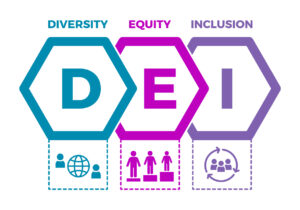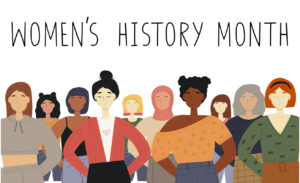The perils of treating DE&I as a communications issue
As part of Communications Week, communicators share what it means to be authentic and transparent on race and equity in the workplace.

Diversity, equity and inclusion have become primary issues for many organizations in 2020.
As companies prepare for 2021, the conversation around DE&I has changed. Commitments, statements of support and promises of allyship were welcome this summer, an important first step. 2021 will be a year of action.
It’s a prospect that excites some who have been working on DE&I within their own organizations, including Shannon Armah, associate brand manager for Barefoot Wine; Amber Arnold, vice president of corporate communications & DE&I Council founder/lead for MWWPR; and Esther Mireya-Tejeda, chief marketing and communications officer for SoundExchange.
All three women spoke at an Oct. 19 panel called “How Brands Can Authentically Connect with Both Consumers and Employees,” part of Communications Week 2020.
“I’m really excited for the action that is going to happen in 2021,” Armah says, speaking of the change from statements of solidarity to the firm action that she hopes to see in the coming year. She says that the foundation has been set, and she is excited to see organizations come out of the gate strong.
Arnold agrees, and says she looks for DE&I to continue to be front and center, not an afterthought or secondary concern. For Mireya-Tejeda, substantive change will take hold when more women and people of color have a seat at the table.
Embracing brand purpose
DE&I efforts are strongly linked to hot trends such as brand purpose and stakeholder capitalism, ideas that have become even more prominent in recent months during the COVID-19 crisis.
“This year, brands have learned how critically important it is for brands to know their brand purpose,” Armah said. Some may have learned that they did not have the foundation of core values necessary to navigate the many issues they faced this year.
Armah argues that it comes down to whether you have a brand that truly engages an audience—or are just a product or service. For Armah’s employer, Barefoot Wine, inclusivity is a top value—and one where the company is doubling down.
Armah says that one way to phrase Barefoot Wine’s purpose is to “welcome new friends to wine” or to make wine more inclusive. The company is trying to live up to those standards by recognizing the importance of its diverse consumers—in particular Black women—and offer financial support to Black entrepreneurs and Black communities.
Even for an organization where DE&I has never been an afterthought, Armah says it has been refreshing to see the conversation elevated to new heights.
Progress vs. perfection
Authenticity is a crucial part of the work around DE&I, and the panelists stress that it is important to think of the process as a journey. “Get educated on how it is impacting your stakeholders,” says Arnold. She stresses that you cannot deliver a message on DE&I until you understand the full picture of what is going on within the organization.
Mireya-Tejeda warns that communicators must push back on organizations’ desire to make DE&I a communications issue. She says that only asking about the “right words to say” or “what to post on social media” are not the actual work of DE&I.
Instead, companies must ask tough questions about their recruitment process and leadership makeup. Ask why more women and people of color are not getting promoted into the C-suite. “Then and really only then can a communications team step in and authentically communicate those plans,” Mireya-Tejeda says.
For communicators, that means raising your hand and calling out missteps—and pushing back on efforts that are clearly an attempt to use messaging to elide more systemic issues.
However, companies mustn’t wait for perfection to start communicating their DE&I work. “You have to get uncomfortable to have the conversations,” Arnold says.
Culture-washing
When is your allyship performative rather than meaningful? It starts with engaged leaders.
“Leaders have to be engaged in the conversation,” Arnold says. If there isn’t active participation from the very top of your organizations, your DE&I efforts are unlikely to be truly transformative. Arnold brings it back to the true definition of the word ally, which in her words is “someone who stands up for or advocates for a marginalized group.” If your messages do not advocate for or achieve meaningful change, that’s “culture-washing.”
A simple question to ask is how is your message, product or service helping to address the issue and make a positive impact? Arnold says that organizations “measure what you treasure,” so the metrics you use to assess your programs will tell you a lot about the real values of your organization.
For benchmarking, Arnold says DE&I leaders should pay careful attention to the releases of the latest Census information. If you aren’t matching the demographics of your community or consumer base, you have lots of work to do.
Measuring success
Arnold argues that when setting goals, organizations should set both long-term and short-term targets. Long-term goals can be broader and aspirational, but she says that your short-term goals must be tangible and immediately quantifiable.
Though some balk at the word “quotas”—or euphemistically reframe the term as “targets”—the panelists all agree that setting measurable numbers that can be benchmarked is crucial for authenticity.
Mireya-Tejeda says that the word quota is often misrepresented as a situation where an unqualified person of color is chosen for a job over a more qualified white candidate—a false argument that compares to claims from some that the talent pool of workers from marginalized groups is too small to meet demand.
“There is no dearth of talent,” Mireya-Tejeda says. “There are plenty of us if you just ask.”
That’s why organizations shouldn’t be afraid to set numbers that they promise to meet. True equality demands careful analysis of how talent is recruited, where that talent is being sought and how personal networks can reinforce racial imbalance.
One solution? Intentional networking. Mireya-Tejeda recommends setting goals for leaders down to employees to make new acquaintances, connect on LinkedIn and build a diverse network so that when it comes time to hire a new team member, you are able to consider a wider range of candidates.
Accountability in 2021
Around the Juneteenth holiday in 2021, it will have been a year since many organizations made some of their commitments on combating systematic racism. What should accountability look like?
The panel stresses that transparency is of the utmost importance, but that accountability doesn’t have to involve mental gymnastics.
Arnold says it could be as simple as, “Did the company do what it said it was going to do?” A year later, you should be prepared to report your progress.








“Dance with who brung you” is a guideline like “work for who’s paying you which is management.”
Amid justified and overdue calls for fairness to minorities, women, LGBTQ, older workers and other groups, a case could be made that PR leaders should also be fair to management. It’s not either/or, and a company can certainly be fair at the same time to several constituencies including management executives.
Neither is it a choice between being fair vs. being profitable. Unfairness to management, like unfairness to a minority, can mean losing some of the benefit that a management or minority can give a company or society when treated fairly
without excessive rules however well-intended.
Just as one can go too far in recycling, as when too much pollution is caused by a ridiculous amount of processing waste, it is no favor to either minorities nor management if well-intentioned rules leads to hiring or promoting people who are put into jobs more difficult than those for which they’re qualified.
It can be dangerous to say the above, almost like preaching hate against Jews or Blacks without coming out and actually saying it in plain language. But I still remember how in a Wharton sociology class, the instructor asked our opinion of a sociologist’s article that “all questions in a family should be decided based on what will be best for the marriage.”
The opinion I expressed: “Bullshit!” They gave me an “A” because there is such thing as going too far.
Wine which one of these writers sells can be delightful. I love it. But just as moderation is wise in enjoying wine, food, music or making money, you could make a case that moderation is also a good idea in trying to be fair to everyone.
Ted Kitterman’s focus on Communications Week should get us to think about when are communications about fairness moderate and beneficial–and can they sometimes be so extreme that they are hazardous to the health of companies, minorities and managements.
Your argument is addressed in the piece. There is no discernable gap in skills or abilities between Black and white employees, yet leaders (and your comment above) continues to assert that we are elevating people into roles they are not qualified for simply because of their racial background. It’s a fallacy. It’s, frankly, racist. I’m not sure how being moderate in our advocacy for fairness and justice serves anyone.
As Ted Kitterman says correctly, “there is no discernable gap in skill or abilities between Black and white employees.” But there sure as hell can be a discernable and huge gap between a highly qualified job candidate of any minority and an unqualified candidate of the same minority.
So we certainly should have more Blacks and women in top management but it benefits no one if a Black or woman is put into a job too difficult for that person.
It would be ridiculous to say “there are too many Blacks in professional football so let’s require that at least half of each pro team must be white.” Or to say that the practice of medicine shouldn’t be limited to the highly educated because many medical schools can be afforded more easily by white people than by others.
Blacks, women, whites and everyone else may be better off if we promote the best qualified into the best jobs. Beyond question some Blacks, women and Jews are better qualified than others in the same groups. Also beyond question is that companies and our society will be better staffed and better served if the best qualified people get the best jobs.
I have capitalized “Black” but not “white” because Ted Kitterman did but deep down I think that each group is as deserving as the other of capitalization and job advancement. Ted says “it’s frankly racist” to “assert that we are elevating people into roles they are not qualified for simply because of their racial background.” But is this sometimes happening and should we try to stop it? It is the ACT of promoting partly on the basis of race—not the assertion that it is being done—that is racist, harmful to many and beneficial to no group.
Reverse discrimination is neither admirable nor wise. Students shouldn’t be admitted nor turned down by a university based on the willingness of parents to pay bribes nor on the basis of race because THAT would be racist.
The big advantage of joining Ragan’s Crisis Mangement Network is that it helps those who join to do a better job for employers and for their own careers. THAT and not race—ability to do a better job—should be the basis on which people are hired and promoted.
But I respectfully applaud the good intentions of Ted and others.